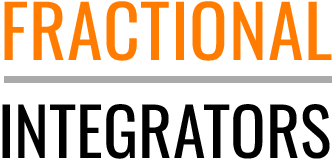In mid 2021, I reached out to the Implementers with whom I had relationships to ask for insights into issues I had been seeing in my assignments. As expected, they were generous, illuminating, and pointed regarding these issues, and I’m grateful for their answers.
The three lessons on how Integrators can make Accountability Charts more effective within a growing company:
Lesson 1: Visionaries start businesses, and the Integrators help them grow.
Companies rarely start as EOS companies, and the Visionary was likely sitting in the Visionary role and the Integrator role as the company implemented EOS. And so the Accountability Chart is not being constructed in a vacuum, but in a living, breathing organization that likely achieved its current success through the sheer will and determination of the Visionary over time.
The Visionary seat on the Accountability Chart is the only seat that is customized to the unique abilities of that Visionary. As is often the case, the roles they keep are because they love them and they are good at them. But that only works for so long, before it gets in the way of growth. They need to give up some roles to the Integrator to focus on Visionary roles. However, that is difficult for many Visionaries.
Through the Delegate and Elevate exercise, it will usually reveal itself as a trust issue, and it is up to the Integrator to talk about the outcome of the current behaviour on the Leadership Team. The task is to identify which roles to give up first, how to measure success, and build trust over time. But to assume the Visionary will simply let go of the things they did to make the company successful in the first place misses the commitment they have towards success.
Lesson 2: The Visionary in too many seats is about opportunity cost.
If a company has the Visionary sitting in too many seats, there may be structural issues the company must solve (low margins, inability to not compete on price, lack of focus, prioritization or execution) in order to be able to afford more people. That is the function of the VTO process and developing the Annual Goals and Quarterly Rocks.
The priorities for the Visionary can often be presented as opportunity costs. That is, the costs of increasing labour, versus the opportunity cost of not having the Visionary focus on higher value roles aligned with their unique ability. What is the impact of more meaningful roles not getting completed by the Visionary, that only they can do, versus re-engineering or outsourcing lower value roles to someone else more appropriate?
The Accountability Chart is a fluid document, always evolving with the business. If the seat cannot be filled with someone else in the organization, or the roles cannot be re-distributed to more appropriate people, then plans must be made to add to the Accountability Chart. The role of the Integrator, with the Visionary, is to make a priority list of which seat to fill first (to move out the Visionary) in terms of cost and leverage to the business. Then set a financial goal to trigger the next hire, and determine the programs and tactics to be completed to afford the resource.
Lesson 3: Accountability Charts are the hardest part of the EOS Journey.
Companies start off, and grow, with too few people sitting in too many seats, doing too many things, until they hit the ceiling. Accountability Charts organize the company, and allow it to build out the seats and roles required to achieve the growth it wants.
But like the analogy of building a plane while it is in the air, Visionaries and Integrators don’t get the opportunity to go back and clean up all the cross accountabilities; they need to be managed in real time. Which is why Implementers say every issue is a Right Person Right Seat (RPRS) issue. Accountability Charts are clean; reality is messy.
Companies are often built through vision and loyalty. Sometimes the people who have been around the longest, are the ones where the seat evolves faster than they do. Visionaries understand that they stand on the shoulders of the people who helped build the company, and naturally struggle with people issues in their business.
Accountability Charts need to be built for where the company wants to go, not where it has been. That is why they are built Right Seat first, with no names. Then when the people who are most appropriate for the seat are added, they are evaluated against the success criteria for the seat (GWC).
My experience has been that there are always people in seats that don’t quite fit. Not by a lot, but enough that it could hamper the objectives. This is where Rocks, and Scorecards help the Accountability Chart, helping the Leadership Team and the Visionary determine if the person can grow into the seat, with time and guidance.
But where there is push back on the Accountability Chart, it is often that the organization needs to evolve more slowly, consistent with their culture, because that is how the company was built. And so the Accountability Chart needs to evolve, quarter by quarter, so that Right Seat Right People issues are fixed with the care and deference they deserve.
Thanks
Rick
